In the spirit of Halloween, this week’s ION Top 10 showcases YouTube’s biggest DIY’ers. They’re showing viewers how to master Game of Thrones cosplay, how to scare the living daylights out of your friends, and of course, there’s the edible wizardry. You’ll find that some of YouTube’s most recognizable faces are killing it with DIY.
-
VPC: $8.35 ▲Value Per Click
-
VPCO: $0.00 ▼Value Per Comment
-
VPL: $0.00 ▲Value Per Like
-
VPM: $0.00 ▼Value Per 1k Impressions
-
VPS: $0.00 ▲Value Per Share
-
VPV: $0.00 ▲Value Per View
-
VPCO: $7.71 ▲Value Per Comment
-
VPL: $0.00 ▼Value Per Like
-
VPM: $0.00 ▼Value Per 1k Impressions
-
VPV: $0.00 ▲Value Per View
-
VPC: $2.86 ▲Value Per Click
-
VPCO: $0.00 ▲Value Per Comment
-
VPFAV: $0.00 ▼Value Per Favorite
-
VPL: $0.00 ▲Value Per Like
-
VPM: $0.00 ▼Value Per 1k Impressions
-
VPR: $0.00 ▲Value Per Reply
-
VPS: $4.08 ▲Value Per Share
-
VPV: $0.00 ▲Value Per View
-
VPC: $20.78 ▲Value Per Click
-
VPCO: $0.00 ▼Value Per Comment
-
VPL: $0.00 ▼Value Per Like
-
VPM: $0.00 ▲Value Per 1k Impressions
-
VPS: $0.00 ▼Value Per Share
-
VPV: $0.00 ▲Value Per View
PewDiePie Talks Ads And YouTube Red’s Business Model
Last week, YouTube raised more than an eyebrow for many users when it came to its subscription-based Red service. While this would certainly be good news for those looking to watch videos without dealing with ads, it’s also posed bad news for long-time content creators, who felt limited when it came to signing on with the company’s newest label.
Felix “PewDiePie” Kjellberg, one of the most popular YouTube streamers out there (he made over $4 million last year alone), expressed his thoughts on the new service through his blog, where he spoke mainly in defense of the service, which aims to charge consumers $10 a month to access exclusive content and skip over advertisements in favor of getting to their content.
He noted that, despite the channel having over one billion users, it’s losing a significant amount of money, with the infrastructure alone costing $3.8 billion a year. He also noted that, per the included image from the Daily Mail below, analysts indicated that users aren’t buying as much products from advertisements as companies hoped. Streaming services like Amazon and HBO pose serious threats as well.
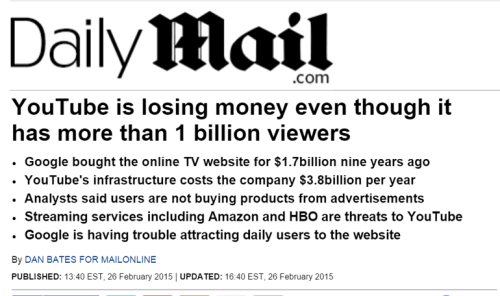
But perhaps the biggest nuisance is ad-blocking software. He posted a poll to his fans asking them if they use it, and 40 percent of the 8,000 who answered back state they do. “It’s a number that has grown a lot over the years, from roughly 15-20 percent when I started,” he said. “And it’s not unlikely that it will keep growing. What this means is that YouTubers lose about 40 percent of their ad income. Personally, I’m ok with if you use adblock on my videos. Ads are annoying, I get it, I’m here to complain about that. But for smaller channels, this number can be devastating.”
He added, “Using Adblock doesn’t mean you’re clever and above the system. YouTube Red exist(s) because using Adblock has actual consequences.”
Ad-blocking software has been a hindrance on companies over the past few months, and it’s a practice that isn’t going away with users anytime soon.
With that, Kjellberg did note that there are still questions about YouTube Red, like “How much of YouTube Red’s $10 actually goes to it’s creators ” and “Will YouTube Red be beneficial for smaller channels Is the $10 price actually justified ”
While these remained unanswered, Kjellberg concluded his blog by simply stating, “These are all important questions about YouTube Red. But right now, it’s more important that we understand what the actual problem is here.”
The full post is available here, and also posts various Tweets in regards to users’ preference to ad-blocking services.
Nielsen: 10% Of ESports Fans Don’t Even Play Games
ESports competitions are set to hit the big time, estimated to make $1.9 billion by 2018. However, they’re not just limited to the PC market.
A new study from Nielsen indicates that consoles are also playing a big part in the eSports scene, with games like Halo 5: Guardians and Call of Duty: Black Ops III set to get huge attention between devoted tournaments and online sessions. The report indicates that only 35 percent of the U.S. eSports audience plays on a PC. That leaves 65 percent that prefers the likes of the Xbox One, the PlayStation 4, and, in some cases, the Wii U, where games like Splatoon have thriving popularity in the competitive market.
In addition, the report also states that 10 percent of eSports fans actually don’t play games at all, showing a draw to seeing other players compete rather than taking part themselves.
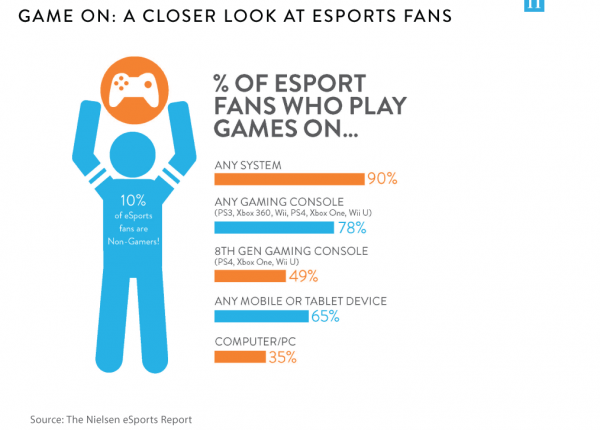
The study, dubbed the Nielsen eSports report, broke down the stats when it comes to what platform players prefer to game on. As you can see, 90 percent would be fine playing a game on any system, while 78 percent actually prefer a console over playing on a PC, and 49 percent of today’s gamers prefer playing on a newer console like the PlayStation 4 and Xbox One.
Mobile also has a startling standout number here, with 65 percent of those polled indicating that they would happily compete using a smartphone or tablet device.
Breaking down numbers even further, Nielsen reported that 57 percent of U.S. eSports fans are in the millennial (18-34 age bracket), while 34 percent are actually millennials. In addition, eSports fans that live in households have a higher household income, by about 10 percent higher than most gamers overall.
A secondary chart breaks down the specifics of eSports fans versus actual gamers, breaking down everything from average age (32 vs. 37), Total Household Income ($64,900 against $58,900) and other brackets. It’s included at the bottom of the article.
Speaking with [a]listdaily, Nicole Pike, director of Nielsen Games, had plenty to say about the report. “With popular PC franchises like League of Legends, Counter-Strike, and Dota dominating the current eSports landscape, it’s easy to assume players of these games are the same people watching eSports competitions. However, knowing the strength of the U.S. console gaming market, the heavy skew toward console gamers our survey shows isn’t surprising. The implications of this will be interesting to watch in the near future, with leagues for top console franchises like Call of Duty, Halo, and more picking up steam; the console fan base is already there, and hopefully the leagues can peak their interest in the same way PC-focused competitions have already succeeded.”
With more tournaments taking place over the next few months and more competitive games like Black Ops III and Star Wars: Battlefront arriving next month, the eSports scene will be stronger than ever. Who knows where it will go from here.
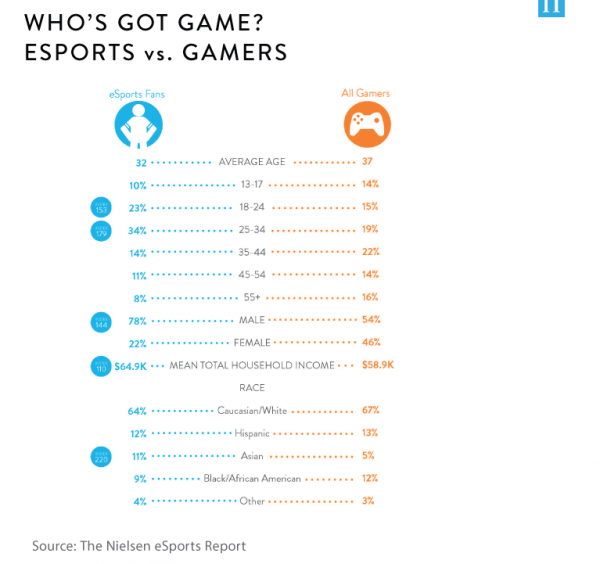
Seven Top Gaming Brand Partnerships Of 2015
Some big video game releases have come out this year already, and with several more to come into the holiday season, we’re likely to see various promotions surrounding these games. Fallout 4 by itself has several in the pipeline, including a specialty beer created by a U.K. brewery for sale in Europe.
Here are some specific game industry brand partnerships that have stood out this year, in one form or another.
Raise your AP! Grab #Fallout4 AND @jonessodaco Nuka Cola Quantum – exclusively available from @Target on 11.10 pic.twitter.com/JWfsm8wzMZ
— Fallout (@Fallout) October 29, 2015
Raise your AP! Grab #Fallout4 AND @jonessodaco Nuka Cola Quantum – exclusively available from @Target on 11.10 pic.twitter.com/JWfsm8wzMZ
Fallout (@Fallout) October 29, 2015
Alongside the beer mentioned above, Fallout fans will have another way to quench their thirst. Starting on November 10th, fans of the Fallout series will be able to buy a real-life Nuka Cola Quantum, a soda brand featured prominently in the video game franchise. Produced by Jones Soda, the blue colored Nuka Cola Quantum will be available for purchase exclusively at Target retailers, as part of a promotion for the forthcoming Fallout 4, which releases on the same day. The partnership was announced with the above tweet, and Fallout fans are sure to make a run for them.
Skylanders Superchargers Revs Up With Max Chilton
Considering how Skylanders Superchargers, has a focus on vehicular mayhem, it only makes sense for Activision to make an impact on the real racing world. Earlier this year, the publisher teamed up with Max Chilton to promote the family-friendly game on his vehicle during the season finale of the Indy Lights racing tournament.
“The Skylanders Superchargers game is all about speed, reaction and, of course, winning, so there are obvious parallels to real-life racing, albeit I can’t grab powerups or slow other drivers down with a laser cannon!” Chilton said in a press release.
Carl’s Jr. Introduces a Special Call of Duty: Black Ops 3 Meal
As part of its promotion for its newly introduced Tex Mex Bacon Thickburger, the Carl’s Jr. chain has teamed up with Activision to create the Ultimate Care Package, which includes the burger, fries and a drink, along with the opportunity to win limited edition items for Call of Duty: Black Ops III, which releases next week.
The commercial for the promotion features plenty of action and promises of some great giveaways, including custom in-game weapons. On top of that, Black Ops III will also be joining the brewery game, like Fallout. Activision announced a team-up with Australia-based Black Hops Brewing to produce a special Black Ops Midnight Pale Ale. Sadly, it too will be sold overseas only, made for the Australian beer market.
Transformers Team Up With Splatoon
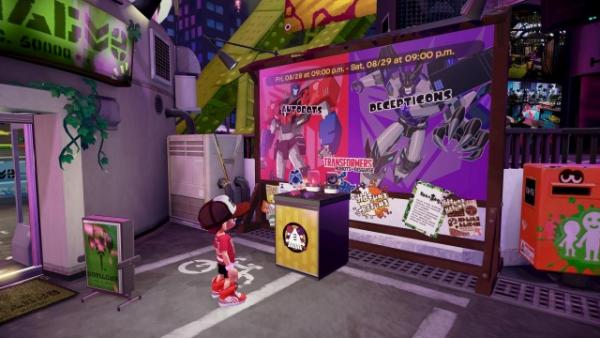
Back in August, Nintendo continued its promotional push behind its colorful shooting game Splatoon by teaming up with Hasbro for a special Splatfest event, which involved the best-selling Transformers franchise. The competition enabled players to choose the t-shirt for their Autobot/Decepticon team of choice, then defend them in the best way possible, all while trying to win Super Sea Snails to purchase in-game gear.
Although it was only a one-time event, the Transformers-themed Splatfest was quite popular, and surely helped push Splatoon‘s surprising sales into the fall season.
Madden NFL 16 Scores a Touchdown With Doritos

As part of its big push into the fall season, EA Sports gave quite a promotional push behind Madden NFL 16. Part of that push involved a team-up with Frito Lay to produce special Madden Ultimate Team codes in bags of Doritos. Fans would be able to find a code inside specially marked bags and redeem them for special players on their fantasy team in the game, including San Diego Chargers veteran LaDainian Tomlinson.
Frito Lay is no stranger to video game promotion, as the Doritos brand has been associated with top games franchises like Halo and Call of Duty in the past. However, this new one enabled a strong connection with the virtual football community.
Amusement Parks Get In On the Game Action

Digital games are becoming more of a real-life attractions with various amusement parks teaming up with video game publishers.
First up, Capcom teamed up with Six Flags Entertainment to promote its 3DS game release Monster Hunter 4 Ultimate, temporarily transforming the Goliath coaster in the Magic Mountain theme park into a Monster Hunter-based theme ride. The company also held a special Caravan Tour to promote the game, complete with playable kiosks and, of course, monsters.
Secondly, in an attempt to expand its Mass Effect universe before the release of the long-awaited Andromeda sequel (announced at E3 earlier this year), Electronic Arts paired up with Great America to create a fun new attraction that stems from the popular sci-fi universe. This will include a 4D holographic theater that brings the game’s world to life using the fully renovated Action Theater. The ride is set to be unveiled in early 2016 in the Santa Clara park.
“Having a partner who shares our commitment to thrilling our fans is extremely important to us and we look forward to building an attraction that will appeal to the Mass Effect fan base and introduce it to many more.” said Patrick O’Brien, Vice President of Entertainment and Licensing for the Redwood City-based EA, in a statement.
In related, EA teamed up with the theme park Carowinds to develop a “3Z” competitive interactive attraction based on the Plants vs Zombies: Garden Warfare game. The attraction is expected to launch in Spring 2016, which is around when Plants vs Zombies: Garden Warfare 2 is expected to release.
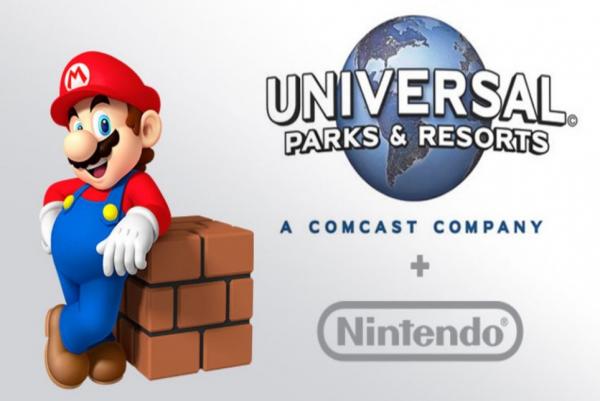
Last but certainly not least, Nintendo is also getting in on the theme park fun. The publisher announced a team-up with Universal Parks & Resorts earlier this year that will bring characters like Mario, Link and Samus to Universal theme parks. There’s no word yet on when these attractions will launch, but we’re likely to see more details emerge next year.
Halo 5: Guardians Gears Up With Hot Pockets
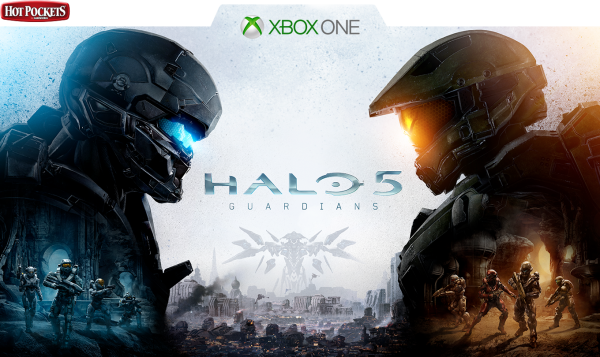
Finally, for those who prefer a quick snack during their Warzone multiplayer sessions, the microwavable Hot Pockets snacks and Halo 5: Guardians have a fun promotion where players can redeem codes to gain additional REQ in-game currency points, which are used for in-game gear packs that feature extra weapons and other goodies.
While not as in-depth as other fast-food based promotions, this is a fun and simple way for gamers to get what they need, sometimes simple is the way to go.
How Influencers Will Be Impacting This Holiday Season
With Halloween this week, the holidays are practically on our doorstep. For 25 percent of consumers, some holiday shopping has already happened. This year, influencers may have a special impact on purchase decisions as we head into the “most connected holiday shopping season ever” according to Google. As a majority of marketers are placing an increased importance on their influencer marketing efforts this year, the holidays are especially key. Now, 78 percent of consumers go online to research what gifts they’ll buy and vet them. Not surprisingly, a whole lot of them are ending up on YouTube.
Of those who watched online videos to help with online shopping, 80 percent watched product reviews and ratings where they are favoring videos featuring people most like themselves (68 percent) instead of experts (45 percent). Watching these product reviews is proving to be a strong influence in the end game: 45 percent of holiday shoppers cite product reviews as the most important influence in making holiday purchases.
It’s also interesting to note that for influencers themselves, these stats are not all that different. In a survey of over 550 influencers, social networks and search engines (you could count YouTube in either of these categories) provide more inspiration for their gift-giving than TV, blogs and magazines combined.
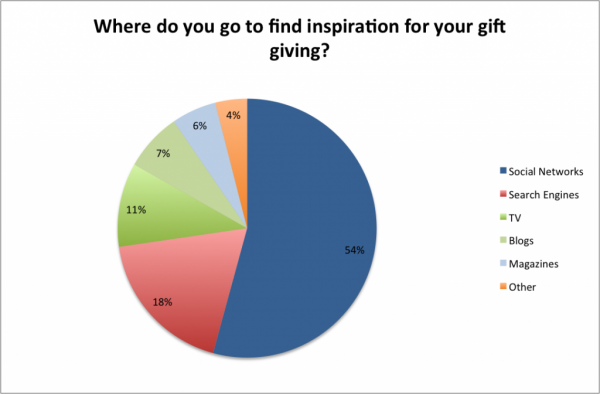
Â
Mobile Games Highlights 10/29: Octodad, Dust
Octodad: Dadliest Catch ($4.99, available for iOS)
Originally released for PC and consoles last year, Octodad: Dadliest Catch finally flip-flops its way to the mobile front with a release on iOS. In it, you play a squid who is actually disguised as the patriarch of a family of four, going through day-to-day adventures while flopping around with tentacles. This game is likely to cater to fans of the original game on consoles and PC, as well as those looking for something delightfully weird to play on the go.
Dust: An Elysian Tail ($5.99, available for iOS)
This compelling side-scrolling platforming adventure originally made waves on the Xbox 360 in 2012. Then it was brought to Windows PCs and Macs before popping up on the PlayStation 4 last year. Now, Dust has made its way to mobile, keeping all its beautiful visuals and exciting gameplay intact. You take the role of a powerful warrior, working alongside an enchanted weapon and a fairy-like creature as you work to cleanse the land of evil. For fans of old-school action games, Dust is a must. This aims for fans of side-scrolling action games like Rayman Fiesta Run and the Mikey Hooks series, although its price clearly shows a higher level of quality.
Templar Battleforce ($6.99, available for iOS and Android)
Fans of turn-based strategic combat games will like what Templar Battleforce has to offer. In it, you work alongside Leviathan mechs and battle against the evil Xenos with the help of the Templar Knights. You’ll divide up your army among a number of specialists within your Templar group, while creating new combat strategies. Although it is the most expensive game listed here , Templar Battleforce is certainly worth the investment. This will appeal to audiences looking for a good turn-based strategy game that don’t want to deal with in-app purchases that many free-to-play games have.
Evel Knievel ($1.99, available for iOS, coming soon to Android)
Stuntman Evel Knievel made quite a name for himself decades ago by performing breathtaking stunts atop his motorcycle. Now, players can relive his glorious stunts in this side-scrolling racing game. Featuring a number of campaigns to race across and obstacles to overcome, players of all ages will be able to marvel at Evel’s stunts, and cringe when things go wrong. Both fans of the stuntman and those learning about his name for the first time are in for quite a ride. This game hits on nostalgia, as well as racing games like Joe Danger Touch and Trials Frontier.
Zombie Match Defense ($1.99, available for iOS, coming soon to Android)
With Halloween nearly upon us, it never hurts to have a game packed with zombies. That’s exactly what Zombie Match Defense brings, with a combination of match-three games and Plants vs. Zombies-style lane defense gameplay. Your job is to clear away hordes of the undead before they can attack poor civilians. Despite the mishmash of two different styles of play, Zombie Match Defense works remarkably well, and the low price won’t take a big bite out of your wallet. Fans of match-three games like Candy Crush Soda Saga and Farm Heroes Rescue. Especially geared toward those looking for Halloween-themed entertainment.
ESports Revenues To Hit $1.9 Billion By 2018
ESports have rapidly flourished over the past few years, but we haven’t seen anything yet, according to SuperData numbers reported by a VentureBeat.
The article indicates that eSports current generates $748 million in revenue worldwide, showing how far tournaments for popular games like League of Legends and DOTA 2 have become over the past few years. This is based on statistics provided by SuperData Research, which also points out that video game competitions are equally appealing among North American and European fans alike, which makes up more than 52 percent of the overall market.
With rising star players, and plenty of sponsors set to devote cash, revenue numbers will continue to grow and may reach $1.9 billion by 2018.
Keep in mind that this number is purely from revenue, based purely on what pro competitions bring in through ticket sales, online ticket purchases, advertising and betting. It does not reflect the money made through in-game transactions, like purchasing costumes for League of Legends characters.
Brands have taken notice of eSports popularity and many have become sponsors quicker than projected, the report reads. By year s end, sponsorships of tournaments, players, and eSports-related sites will exceed $578 million, just 28 percent less than this year s NBA sponsorship total. That’s just 77 percent of total eSports revenues, while the remaining 23 consists of daily fantasy gaming sites, prize and tournament pools, and merchandising.
Out of all the money made, ticket sales seem to be lowest, which brings in $15.9 million. However, that number doesn’t account for what sponsors bring in through game broadcasts over Twitch and other networks.
Investors can’t help but get involved. Funding for various startups and platforms jumpstarted the eSports market, equaling an estimated $150 million year-to-date, reads the SuperData report. Multiple eSports and traditional sports betting platforms like Unikrn, Draftkings, and FanDuel have emerged this year. These platforms are receiving multimillion dollar investments from prominent figures like Ashton Kutcher and Mark Cuban.”
The sheer thrill of competition continues to be the key focus, and fans can’t get enough of their favorites. 76 percent of eSports fans have a favorite team and 69 percent have a favorite player, according to the SuperData report. Thirty-two percent of eSports fans watch tournaments for the players and teams. Fans have now become more acquainted with eSports superstars, increasing the celebrity of both teams and players.
To lend a little insight in regards to the appeal of eSports to brands, [a]listdaily posted an interview yesterday with EEDAR’s business analyst Ed Zhao, who explained the appeal to not only devoted brands, but also those considered non-endemic. “We researched a large number of non-endemic sponsors and their involvement of eSports. Generally, beverage companies have been some of the first to broach this. Companies like Red Bull and Coke have led the charge by really instilling themselves within the community. Red Bull hosts their own tournaments while Coke has sponsored League of Legends viewing parties in theatres. Many of these non-endemic sponsors have really worked to make themselves a part of the community rather than simply putting up advertisements and calling it a day.”
There are also lessons to be learned from devoted brands. “Non-endemic brands usually have to try a little harder,” said Zhao. “eSports viewers will already gravitate to a peripheral company like Razer due to that brand s great reputation among gamers. Razer simply has to remind the viewers about the brand and that can drive sales. In comparison, non-endemic brands have to prove they re really a partner and not simply there for the numbers.”
Opportunities will open up for broadcasters, and not just on Twitch. “We believe this can really act as a great proof of concept for many of the larger brands. Currently, it s only a few major brands that have really embraced eSports. It s something like a Coke sponsoring viewing parties or Intel with their tournaments. Many of the biggest brands are still watching, but they can see the massive upside. Today, eSports doesn t necessarily need TV to succeed but it will help to usher in greater widespread acceptance and advertisement opportunities,” said Zhao.
Mobile Video Ads Becoming More Popular Than Ever
More companies are investing in mobile video ads, now that cellular broadband networks can handle the content demands, and it’s only going to grow. A December 2014 Business Insider Intelligence report estimates that mobile video ad revenue in the U.S. will reach over $4.4 billion by 2018, which shows an increase over a five-year CAGR of 73 percent reported in 2013. Business Insider Intelligence also estimated that mobile video would grow five times faster than desktop video ads.Even if you go with eMarketer’s more conservative estimate of mobile video revenue will grow three times faster than desktop ads throughout 2020 (detailed in a June 2015 study), there’s no denying the momentum of video based advertising.
With that in mind, AppsFlyer and AppLovin have teamed to together and created a report that shows the full impact of mobile video ads.
The two companies measured data from over one billion devices worldwide, taking a close look at the growth of mobile video and data regarding app retention globally and across multiple platforms. Retention is crucial to publishers and marketers alike, mainly because of an app’s “stickiness” in terms of people using it more regularly.
The report also found that mobile video seems to be the fastest growing advertising format, with a 190% increase over the first three quarters of 2015. More importantly, video ads are 40 percent more effective for creating user retention than non-video ad formats. However, iOS video ads have a greater retention statistics than on Android.
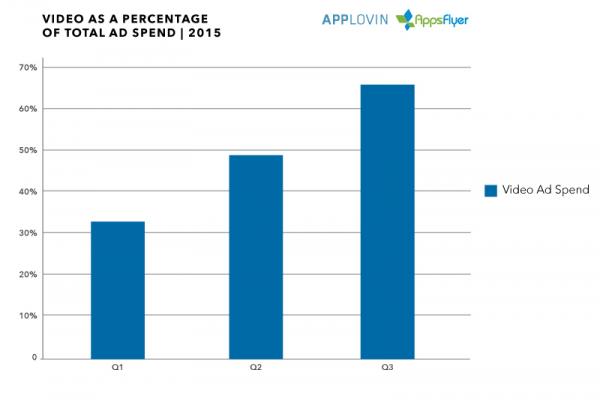
Charts indicate that video ad spending jumped quite a bit between the first and third quarters, going from just over 30 percent to 65 percent in 2015.
Global ad spend on video increased with non-gaming advertisers, going from 16 percent to 46 percent within the same time period. Meanwhile, those within the gaming market rose even higher, going from 20 percent to 71 percent from Q1 to Q3, as indicated in the chart below.
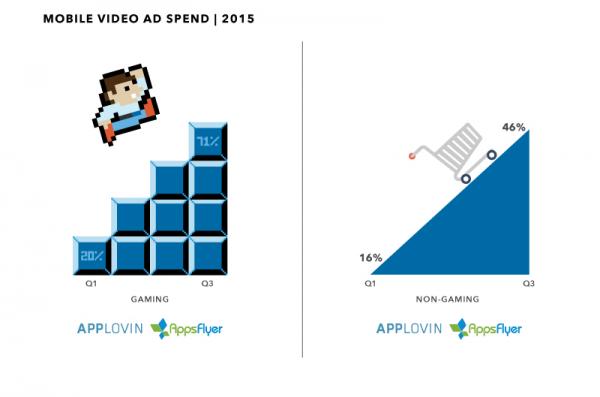
As for retention, AppsFlyer emphasizes its importance, since the average Android app on Google Play manages to lose around 77 percent of daily active users within three days of its install. Video ad formats can normalize retention over non-video ads by about 34 percent. “If a player downloads a game after seeing a video ad, they are a third more likely to stick around than if they downloaded the game after seeing a non-video format ad,” says the report.
iOS outperforms Android in normalized retention, with 40 percent and 30 percent, respectively.
“Specifically, in regards to retention, mobile video ads let consumers know what to expect from an app or game, so they know what they are getting into before they download,” the report states. “It makes sense then that this self-selecting sample (those who watched the video then chose to download it) would stick around longer.
“In the early days of mobile advertising, video ads were impractical. Most phones couldn’t handle displaying them, and cellular networks certainly couldn’t either. But as this report suggests, the conditions right now are perfect for the success of mobile video ads.”
To add further input to this report, Ran Avrahamy, AppsFlyer’s head of marketing, answered a few questions regarding the effectiveness of mobile video ads and retention.
What is it about video ads that make them so effective at creating app retention?
The report mentions that video ads on iOS outperform those on Android by 10 percent in terms of retention. What do you think accounts for the difference?
The report also notes that Android apps lose an average of 77 percent of its daily users within three days of install. Do video ads appear to make a significant impact in changing this trend?
What kind of difference in retention did you see between the best performing app that used a video ad compared to the best non-video ad app?
Is average retention using video ads the same across both gaming and non-gaming apps, or is there a significant difference between the two?
How Mobile Video Ads Lead To Greater App Retention
With the growth of high-speed mobile broadband comes new opportunities for using different kinds of ads. Video remain as one of the most effective means of advertisement, especially when it comes to retaining user retention for a mobile app. In this year alone, mobile video ad spend has nearly tripled, as they can help app retention by up to 40 percent. A December 2014 Business Insider Intelligence report estimates that mobile video ad revenue will reach up to $4.4 billion by 2018.
A new report, created in a partnership between AppLovin and AppsFlyer, examines data from over one billion devices worldwide to determine the overall effectiveness of mobile video ads.
[a]listdaily speaks to Ran Avrahamy, AppsFlyer’s head of marketing, to get further insight into the report and what it means.
What is it about video ads that make them so effective at creating app retention?
Video ads show a user what an app is truly like way more effectively than any text ad or even any static display ad ever could, so the user has a pretty good sense of what to expect from the app before they install it. If a user gets to watch the app in motion and has the chance to actually see its graphical movements, its gameplay, or whatever its best features are in action, and then they choose to install it, it’s because they’ve already decided that they’re interested in the app and the chances are pretty good they’ll like it once they start using it. With other types of ads, the user is taking a bit more of a leap of faith that the app is something they might like, and once they start using it they might discover that it’s not quite what they thought it would be.
The report mentions that video ads on iOS outperform those on Android by 10 percent in terms of retention. What do you think accounts for the difference?
That’s a great question. One theory is that there are slightly more apps available on Google Play than the App Store (about 1.6 million to 1.5 million, respectively), so Android users have more options to choose from. In addition, iPhone users are a different demographic (younger and more affluent) than Android users and therefore use apps differently. Lastly, the variance of Android devices (some top of the line but others not) means the whole experience of watching videos may be impacted. iPhones are, on average, better devices than the average Android device, whether in relation to performance, sound, video quality, resolution etc. so an iOS user is more likely to experience the full potential of a video ad unit, leading to better engagement and ultimately driving action.
The report also notes that Android apps lose an average of 77 percent of its daily users within three days of install. Do video ads appear to make a significant impact in changing this trend?
Yes. The data in the report looks at retention on Days 1, 7 and 30, as these are the most common milestones measured by mobile marketers. Our data for Android video retention shows a drop of nearly 60 percent by Day 7, which is still far less than the 77 percent drop that occurred as early as Day 3.
What kind of difference in retention did you see between the best performing app that used a video ad compared to the best non-video ad app?
Most apps, especially the top performing ones that are highly savvy, always use a variety of ads video and non video so it’s not really possible to isolate this kind of data. What we can say is that when looking at the top performing Android apps, video ads on Android had a nearly 38 percent higher retention than non-video ads.
Is average retention using video ads especially effective with video game apps?
Yes. It is well known that mobile video is a huge hit among gaming developers as it can best capture game play and cool graphics. So on Android we see a 33 percent higher retention on gaming apps using video ads, while on iOS the gap is even bigger reaching 47 percent.
Studio Wildcard Discusses ESports Future For ‘ARK: Survival Evolved’
Studio Wildcard recently held the largest ARK: Survival Evolved tournament to date. The tourney, dubbed The Last Stand, is the culmination of months of events that were featured on Twitch’s front page. Over 250 ARK “survivors” competed for more than $75,000 in prizes. Sponsors such as Logitech G, Cyber PC, Nvidia, and Nitrado have already partnered with Studio Wildcard in this new eSports business.
ARK stands out from the eSports crowd not just because of the prehistoric dinosaurs, but due to the open island survival gameplay experience. Jesse Rapczak, Studio Wildcard co-founder and co-creative director on ARK, discusses the future of this new eSport, including crowdfunding for future tournaments, in this exclusive interview.
 Jesse Rapczak
Jesse RapczakWere you thinking about eSports during development?
We knew that because of our inspiration, which was a of mixture of Hunger Games, Dino Riders, and Jurassic Park, we had this idea that it’d make a cool competitive game mode. We didn’t launch initially with it, but we did have a target to get it up with our modding tools after Steam early access. Survival of the Fittest is a good example of how to make a total conversion mod from the base game.
How have you seen the evolution of game as an eSport?
Almost every time we run a new tournament we incorporate feedback from previous ones. This one had four weeks of qualifying before the final event. We’re taking the time to respond to player feedback and come up with some more fun and exciting twists as we go forward. We have so many different types of events and so many strategies to win in the Survival of the Fittest matches, it’s just interesting for us to watch people play these matches on Twitch live and on YouTube recaps to see what they’re doing in the game.
What are your eSports plans moving forward?
We want to broaden the appeal of the game — not just to people who are fans of eSports — but use ARK and its dinosaurs and what it means to survive, which connects with TV reality shows like Survivor and pop culture movies like Hunger Games to reach a broader audience. I feel like we’re breaking the eSports mold a little bit. We’re moving away from a set map scenario where you can practice corners and timing and weapons, and we’re providing a tournament where you need to be prepared for anything that comes in your way. Community voting has a bit of hand in the match, as does dinosaur AI, and also other players. As a result, we see people discussing a tournament way after it ended to talk about strategies. We want to bring it more mainstream and create entertainment that the audience can enjoy. In a way, we’re anti-inspired by traditional eSports. Of course, we want something that appeals to eSports fans, but we want to open it up much broader.
How do you see established leagues and their production value impacting what you do going forward?
From a production value standpoint we’re inspired by the LCS stuff and the big tournaments that happen. We want to shoot for the high production value because that goes to the entertainment angle. Riot and Valve know how to handle tournaments and champion the good teams that are out there. One good way to improve things is a more polished Spectator mode and the ways in which the players can’t see God views new. The island is so huge and the teams are so spread out, there’s this challenge we have that other games don’t — which is finding all these different teams. Our latest tournament had 250 people. It’s challenging because of the unpredictable nature of the game.
How do you see the Spectator mode evolving?
This is our first stab at that. We had 70 tribes at the beginning of The Last Stand and tribes consist of up to six people, although some people chose to play solo. It’s hard, given the action to have the camera zoom around quickly, hopping between tribes. We have quick keys to search for tribes and any time anyone is killed a giant billboard in the sky proclaims their death and how they died. But that’s what we want to improve in the future. We want to automate that camera in the future so we don’t have to rely on a real person to manually do that — which is what we did at tournaments.
What role do sports arenas play in your future?
We partner with Twitch and some of the eSports gaming groups. The H1Z1 Invitational was a physical location at TwitchCon. The challenges in that tournament are similar to ARK in that it’s a survival game and the numbers of people are critical to the way the game works. We’re looking at what went right and wrong, and we have a good relationship with the Daybreak guys. It’s a totally different game. We’re all in this new genre together with survival eSports. We look at how to make this more manageable from a logistics location.
What’s the format you’d use for eSports moving forward?
The physical tournaments would be the championships. When we look at what we’ve done, we like the tournament ladder and the stories that happen over weeks and months of online play. This lets players follow teams and players and find fun ways to follow that through in-game content and out-of-game through videos and different teams brands. It then just comes down to planning and having teams there in a physical place for the championships. It’s still early and we have a lot to do.
What’s next for Survival of the Fittest?
We’re taking this from a mod to a full game mode. We’re taking eSports very seriously and that team is going to look at how to improve all the things we have listed.
How long will the development take?
It hasn’t even been a year since we began working on the game. You can expect to see some fast movement in less than six months and see the fruits of our labors.
What are your thoughts on crowdsourcing prize pools?
We like that approach with what Daybreak did with H1Z1 and Valve did with Dota 2. ARK is a great opportunity to do something like that. We were at Valve eight weeks ago talking about this. They were blown away by the amount of people they were getting investing in The International Dota 2 tournament. Valve has a really good model of engaging players and community in the game through in-game items and contests where people create merchandise. It’s the next natural step to crowdsourcing your prizes.
In real sports, NFL games are expensive, but that’s how you’re supporting your team. Crowdsourcing is like that. It’s more direct with the money going to the champions. Daybreak and Valve did that right.
